September 9th, 1943
The Allied landings around Salerno, also known as Operation Avalanche, begin.
 Experience the dynamic campaign in game with
Experience the dynamic campaign in game with 
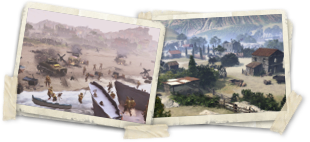 Find out more
Find out moreNapoleon once said: “Italy is like boot – you have to enter it from the top”. Indeed, this solid dictum of military strategy has held true for thousands of years, since the famed North African general Hannibal invaded via the Alps, rather than simply crossing the Mediterranean.
In the Second World War, the Allies ignored this key lesson. Instead, they aimed to land in the southern Italian port city of Salerno, and hoped to push swiftly north through Europe’s ‘soft underbelly’. However, to quote American General Mark Clark, Italy turned out to be “one tough old gut”.
Read on to discover the events of WW2’s battle of Salerno – AKA Operation Avalanche –and learn all about an amphibious assault that landed the Allies in hot water.
By early 1943, the tides of war were starting to turn against the Axis powers.
From their bases in North Africa, the Allied forces sized up their opponents. Up until this point, German forces in particular had advanced almost unchecked, and placed vast swathes of Europe under their boot.
But the new swathes of Axis-occupied territory in the Mediterranean – stretching from Spain to Greece – offered an advantage for the Allies. Namely, that the Germans were now unsure where their enemy would strike next.
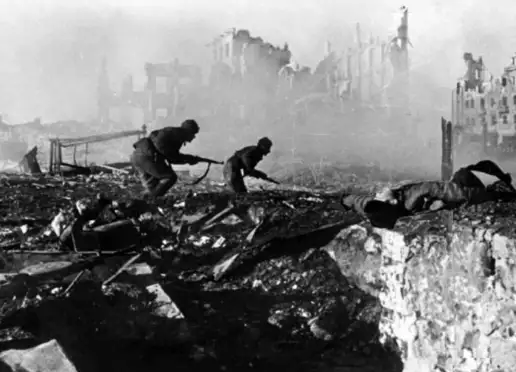
The Battle of Stalingrad: Soviet soldiers on the attack on the house, Stalingrad.
A few months before the Allied victory in North Africa, a uniformed British Royal Marine washed ashore on the Spanish coastline. His body was discovered by a local fisherman, who alerted the authorities.
Attached to the man’s wrist was a briefcase, containing classified correspondence between two British generals. It outlined plans for an Allied invasion of Sardinia and Corsica. According to two separate forms of identification, the deceased officer was Captain (Acting Major) William Martin.
As the Spanish were nominally neutral, they returned the body and briefcase to the Allies – but not before they made a copy of the documents and passed them to the Germans.
Before long, Hitler and his high command were poring over the plans in Berlin. They quickly diverted troops in the Mediterranean to Sardinia and Corsica to prepare for the Allied onslaught.
But there was a hitch. The Royal Marine washed up on the Spanish shore wasn’t a marine at all. In fact, he was a deceased British civilian the army had dressed up as a soldier. His ID and documents were faked, and his body had been dropped off the Spanish coast by submarine. This incredible ruse was codenamed Operation Mincemeat – and everyone from Churchill to the US General and future president Dwight D. Eisenhower were in on the act.
By the time the Germans realised their mistake, the Allies were on their way to Sicily.
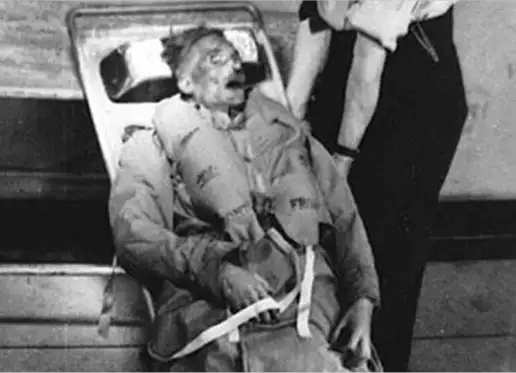
Corpse of "William Martin", prepared for release into the water
“[The Italians] were not ready for a modern war during World War Two. They had a number of brand-new battleships, and they had certain parts of their army that were very technologically advanced, but the majority of their army was not well trained, not well motivated, and very angry with the Germans…Their country was being bombed and the Germans were obviously no longer their allies, but their overlords. Their country was getting destroyed by the war. You had hundreds of thousands of men being killed on the eastern front.”
- Writer, Bill Beigel
The Allies planned a three-pronged attack on Italy. The two southernmost offenses – Operations Baytown and Slapstick – would distract the Axis forces and draw them away from the primary landing point at Salerno.
From there, the Allies planned to cut off the Germans from the north, and push onwards towards Naples and Rome.
Kesselring saw the feints of Baytown and Slapstick coming and moved his troops further north, awaiting the invasion at Salerno – where battle would later be joined.
As a result, the Allies faced little resistance and captured two strategically important ports. But their objective to tie down the German forces in the south had failed comprehensively.
The real face-off would take place on the beaches of Salerno – and the Allies weren’t fully prepared for the task ahead.
“The Allies were still not experts in doing these beach landings,” says Beigel. “Some of the landings in North Africa, they just landed, and nobody was opposing them. So, they were not as well experienced in doing amphibious landings in the European theatre as they were to become later.”
Indeed, there was a crucial element of training involved in the Salerno landings. With the Normandy invasions also in the pipeline, Allied high command needed to ensure their troops were ready. They were soon to find out that beach landings weren’t as straightforward as they hoped.
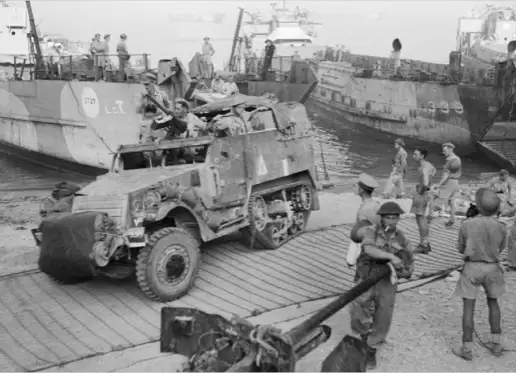
A half-track and anti-tank gun coming ashore for Operation Baytown
A mixed US-British 5th Army spearheaded the assault at the Battle of Salerno.
Communication would be essential – but poor, mismatched technology meant that the two Allied forces struggled to keep contact with each other:
“We’ve got to remember that the radios that were being used in World War Two in a lot of cases were a joke,” says Beigel. “They did not work well. They were big and bulky, so a World War Two radio that a guy on the ground might have would be as long as your arm. A very long, bulky thing that was very temperamental”.
On a basic level, the Americans were inexperienced too. Their soldiers were new to the war, and their army, navy and air forces were not well trained in working together.
Beigel notes how “many of their Generals were still newcomers and the lots of the troops were 18- and 19-year-olds. So, there's that definite learning curve that the Americans had to do once they hit the beach.”
The progress was so poor, Churchill would later remark: “I had hoped we were hurling a wildcat onto the shore, but all we got was a stranded whale.”
The defenders, on the other hand, fielded just 35,000 troops. However, these were two of the fiercest German divisions – the 16th Panzers and the Hermann Göring Division. Their elite, ideologically zealous troops had spent almost a decade being trained and indoctrinated. In fact, Kesselring boasted how one such soldier was worth three of the Allies.

US soldiers Unloading equipment on a beach near Salerno
Salerno is a port city around 30 miles south of Naples, based around a natural gulf. Chosen for the landings due to its excellent sea approaches, it lacked ridges, obstacles and shoals, had convenient underwater gradients, and relatively soft defences.
Find out more about the facts, figures and statistics of the Salerno landings.
The Allies had expected these defences to be manned by demoralised and isolated Italian troops. They were wrong:

Battle of Salerno Map
The Salerno landings’ order of battle featured the following:

Sign of the British X Corps in the Second World War
The British 10th Corps originally fought on the Western Front of the First World War, before disbanding. When they reformed in 1942, they fell under the command of the British 8th Army, and saw action in North Africa.
At Salerno, they were placed in General Mark Clark’s US 5th Army, under the command of Lieutenant-General Richard L. McCreery.
Around 200 British troops of the 50th Tyne Tees and 51st Highland Divisions refused to fight at Salerno – protesting against poor organisation.
Learn more about the British 10th Corps and the Salerno Mutiny.
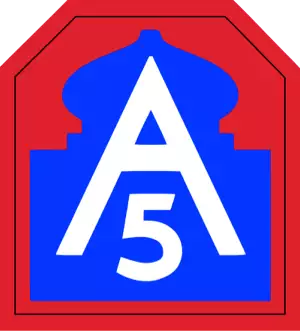
Fifth Army Shoulder Sleeve Insignia
The US 5th was founded in 1943, and saw its first action in battle at Salerno. In stark contrast to the Axis adversaries, most of the 5th Army were ordinary conscripts. They were disorganised and poorly trained – so much so, that some ships even sank during training exercises before they were even attacked. They were also inexperienced in communicating with other branches of the US Military, such as the air force and navy. These factors hampered their progress on the battlefield.

Mark of Ww2 GermanDivision Panzer 16 during WWII
This elite German armoured force had seen extensive action in the invasion of Poland, and later at Stalingrad. Though many had died fighting the Soviets, the unit reformed and was moved to Italy to face the Allied invasion.
They were a highly experienced, well-equipped and famed unit. Having continually modified their tanks throughout the course of the war, the 16th Panzers had some of the most modern examples.
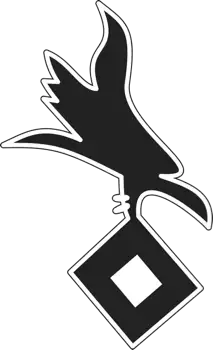
Divisional symbol of the Fallschirm-Panzer Division 1 Hermann Göring.
Formed in 1933 under the personal command of Göring himself – who was one of the most powerful men in Germany after Hitler – the unit helped him consolidate power. Later, they would become a crack force of ground fighters, and were known for carrying out brutal reprisals against partisans in Italy.
Despite their renown, the division and commander Rudolf Sieckenius would later be blamed for their failure to stop the Allies at Salerno.
“The Fritz bomb was very advanced for the time. None of the other nations in the world, Allies, or other Axis powers, had anything like it. It was a radio-controlled bomb that an aircraft would fly to the target area, then the Fritz bomb would be able to pick up radio signals from the ship that it was attacking. And so, they were very successful. In fact, the Germans had used them before Salerno to sink a couple of Italian ships, because they were worried that the Italians were going to take their big vessels and turn them over to the Allies.”
- Writer, Bill Beigel
The British and American forces both made slow but steady progress – softening the Axis defences. Over the next two days, the Allies built on this relative success, but faced intense fighting in the town of Battipaglia.
By the end of the third day, the Allies held a precarious foothold in Salerno itself. However, the port was in ruins, and wasn’t ready for use.
Believing the Allies to be on the verge of retreat, and aiming to exploit the seven-mile gap that remained between the British and American forces, the Axis launched a stinging counterattack.
It wouldn’t be the only bad news for the Allies that day.
_is_hit_by_a_German_guided_bomb,_off_Salerno.webp)
USS Savannah being struck by a German guided bomb off Salerno
Back at Salerno, German General Vietinghoff moved swiftly – aiming to push the Allies back into the sea and cut off their escape. This began by stalling the attacks of the US 36th Infantry Division on the strongpoints of Altavilla and Hill 424.
However, this setback was only the start of the Allies’ problems. The Germans made a determined attack on the Sele-Calore corridor, and Vietinghoff primed forces for an attack at the south of the front.
Amid the chaos, Mark Clark met the Allied command to plan an evacuation, and Vietinghoff informed Kesselring of imminent victory.
Nonetheless, the Americans stood their ground – firing round after round of artillery into the German onslaught, bolstered by tanks and tank destroyers. The Germans eventually ran out of resources, and temporarily pulled back.
The situation was still highly precarious, but the short reprieve after the bloody fighting of September 13th allowed the Allies to regroup.

Supermarine Spitfire rests on the beach near Salerno after being shot down
Operation Avalanche was over – and Salerno was in Allied hands. But this victory came at a high price.
Over the course of the week-long battle, the Germans suffered just over 800 deaths, with 2,000 wounded, largely as a result of artillery and naval gunfire.
By contrast, Allied casualties were much higher. Approximately:
Kesselring, Vietinghoff and the elite German troops had proven that the Italian invasion would be no walkover.
Beigel believes that the Salerno landings were an important lesson:
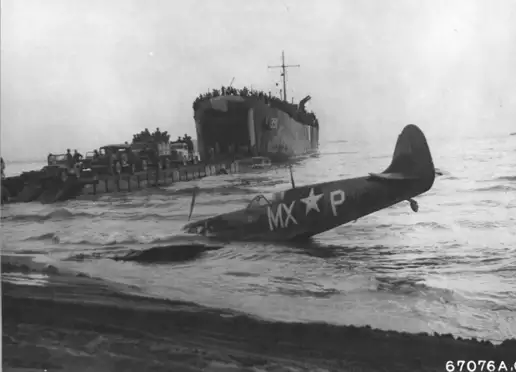
General Montgomery’s slow progress from the toe and heel of Italy also reflected a key disconnect between the British and American forces.
“When the Americans landed at Salerno,” notes Beigel, “Montgomery was supposed to bring thousands of British troops up from the South and meet them there. And in the American mind, Montgomery was going way too slow. This is a problem that the US had with Montgomery for the whole war”.
General Mark Clark had also arguably made a number of strategic blunders. His decision not to bombard the German defences at Salerno had potentially bogged down the Allies, while the US Army’s poor organisation even led to mutiny among British troops.
Next time, the Allies would need to match German aggression, skill, communication and tactical ability stroke for stroke.

“Until you have fought the Germans, you haven't really been in a war”.
- Mark Clark reflecting on their fierce opposition put up by their opponents in Italy
September 9th-18th, 1943
The engagement began when British and American forces invaded Salerno, which was held by German divisions.
The Allies successfully landed at Salerno and held their position, but they lost far more soldiers than the Axis.
The American 5th Army, incorporating British troops, fought on the Allied side. The Germans were made up of the 16th Panzers and Hermann Göring divisions, but received reinforcements later.
Around 170,000 Allied troops faced off against 35,000 Germans. The Allies lost around 2,350 troops, with 4,100 missing. The Axis lost just 850.
The goal of Operation Avalanche was to gain a naval foothold in southern Italy and then capture Naples.
The Allied invasion of Italy helped capture important shipping routes in the Mediterranean. It also led to the downfall of Mussolini and redeployment of troops from the Eastern Front. It came at a heavy cost to Allied lives, however, and there were a number of strategic blunders.
©Relic Entertainment. All rights reserved. Developed by Relic Entertainment. Entertainment, the Relic Entertainment logo, Company of Heroes and the Company of Heroes logo are either registered trademarks or trademarks of Relic Entertainment. Relic Entertainment is registered in the U.S. Patent and Trademark Office. All other trademarks, logos and copyrights are property of their respective owners.